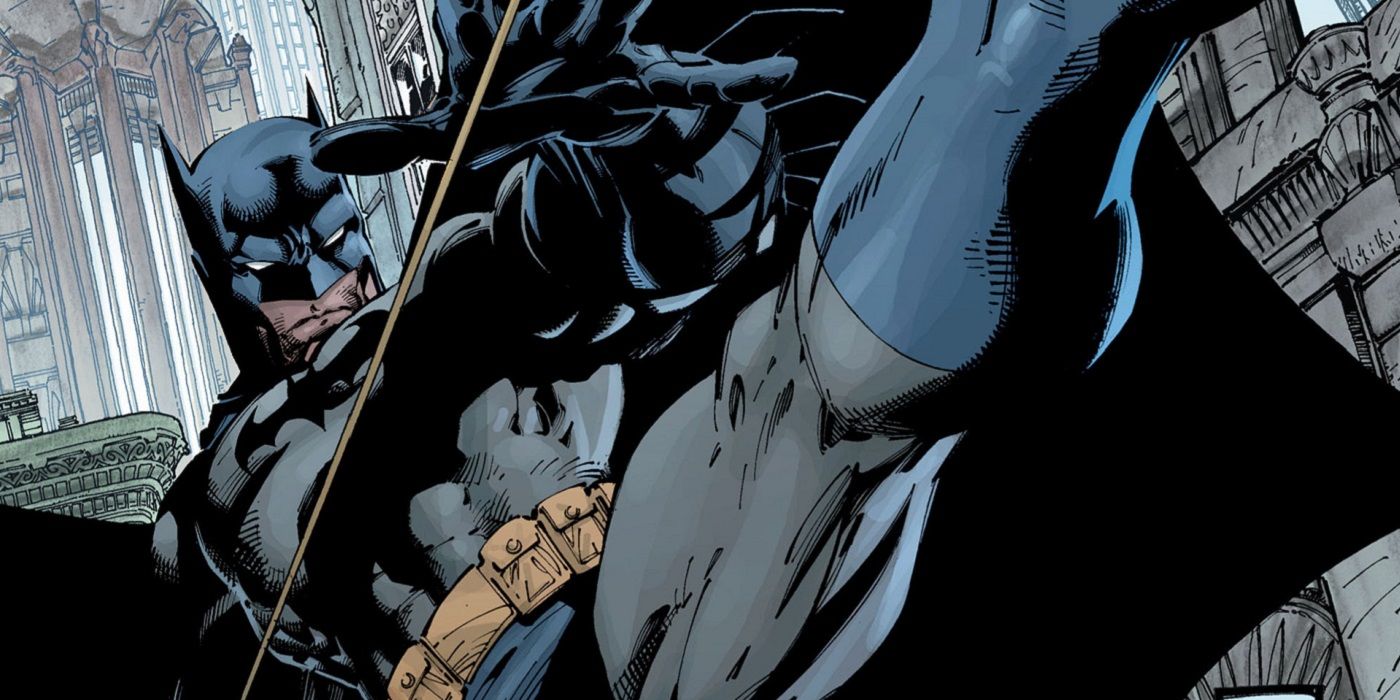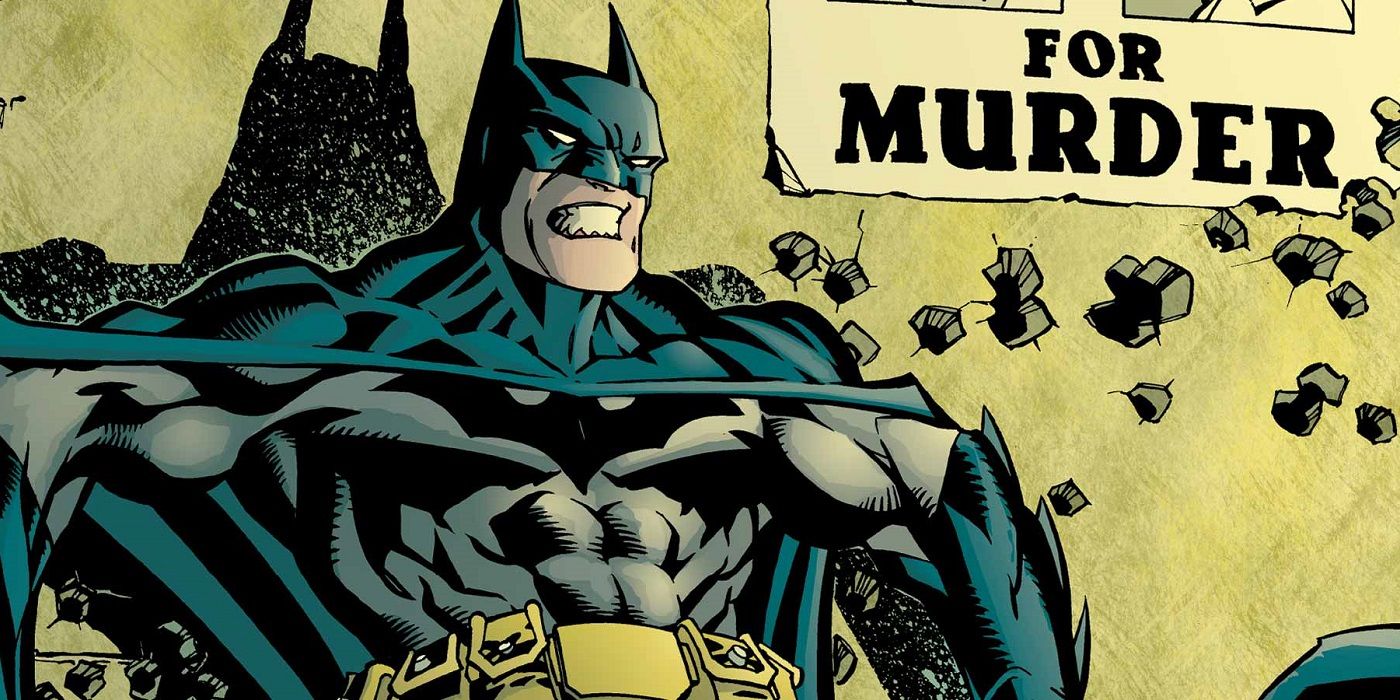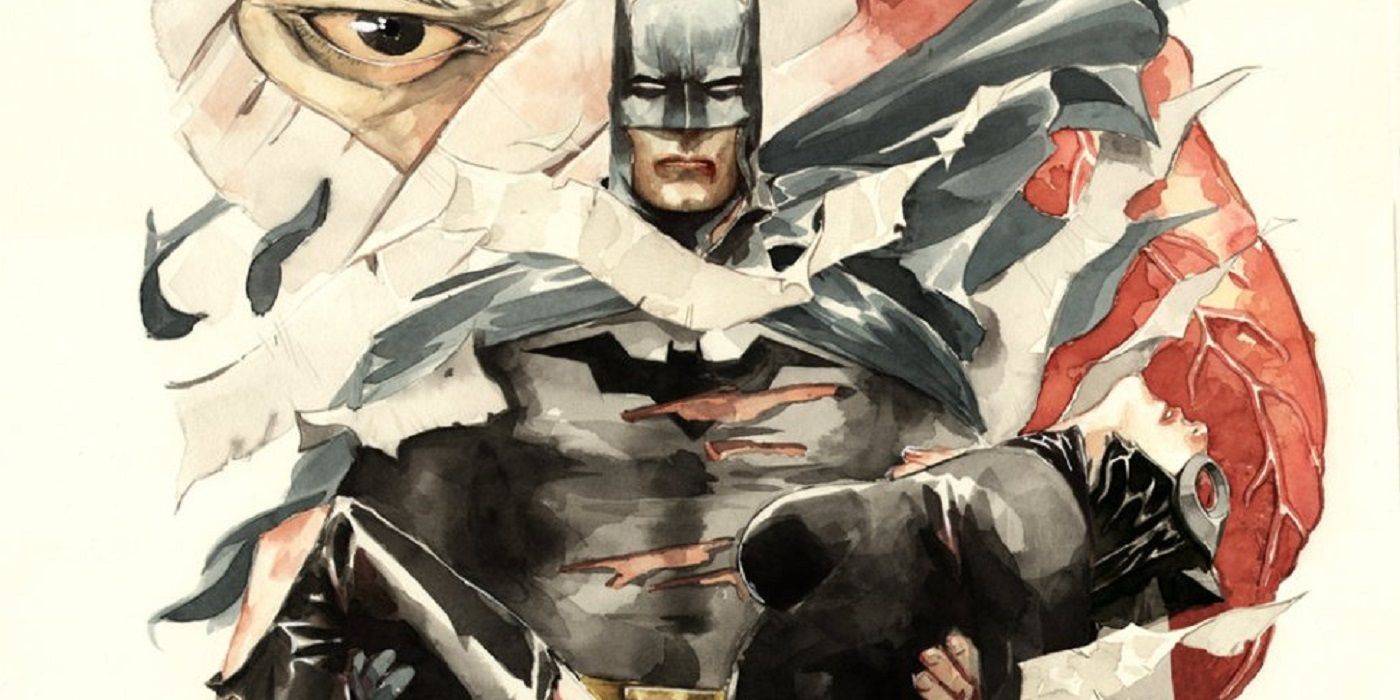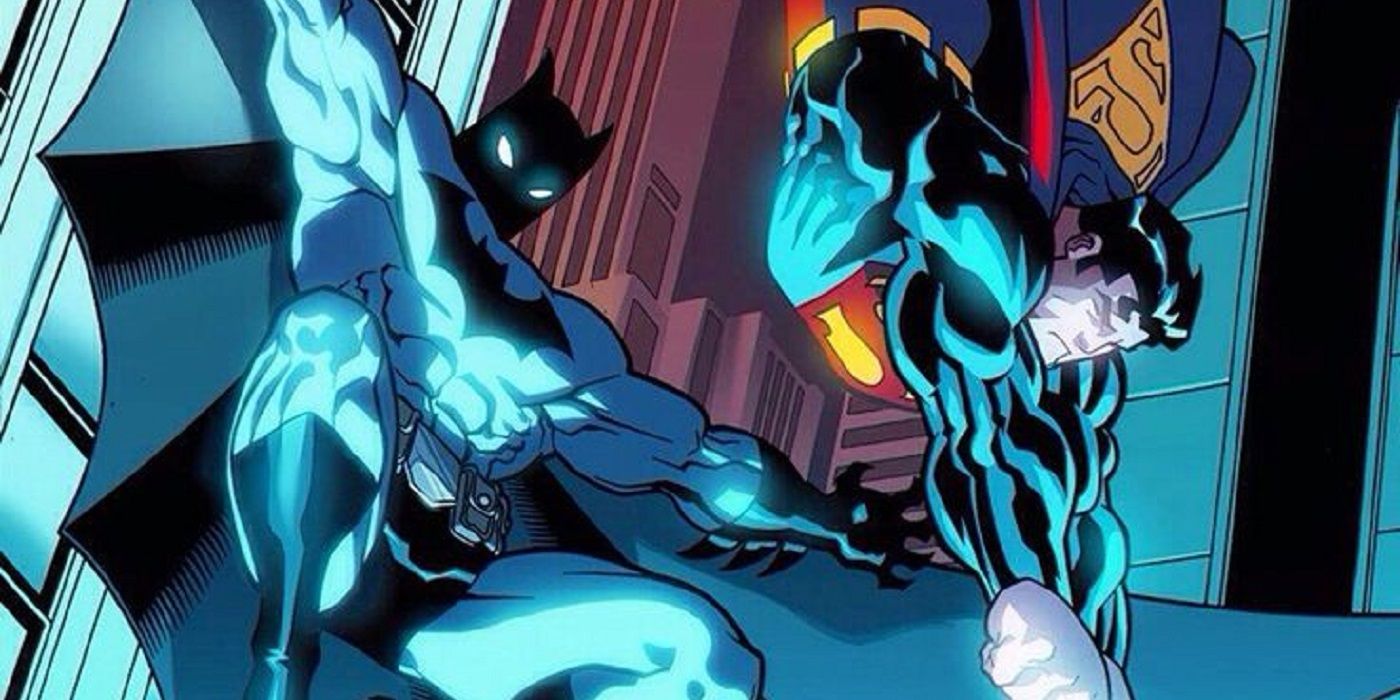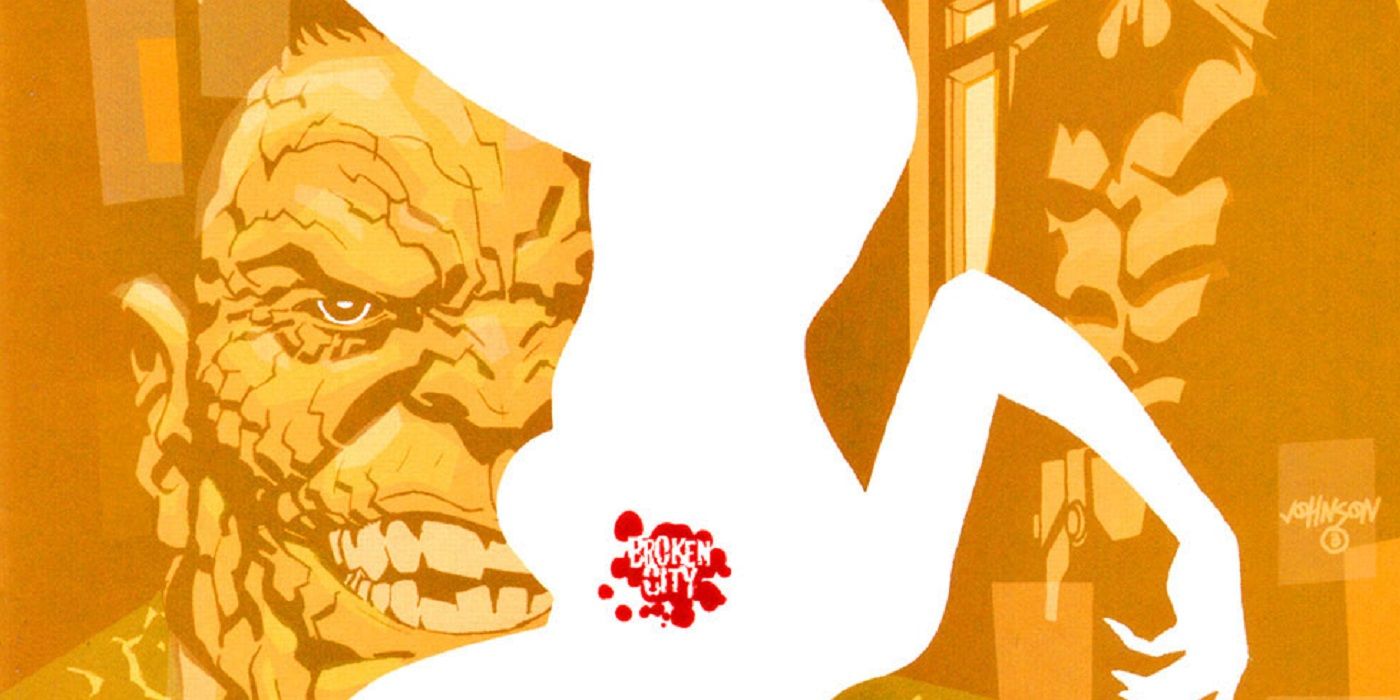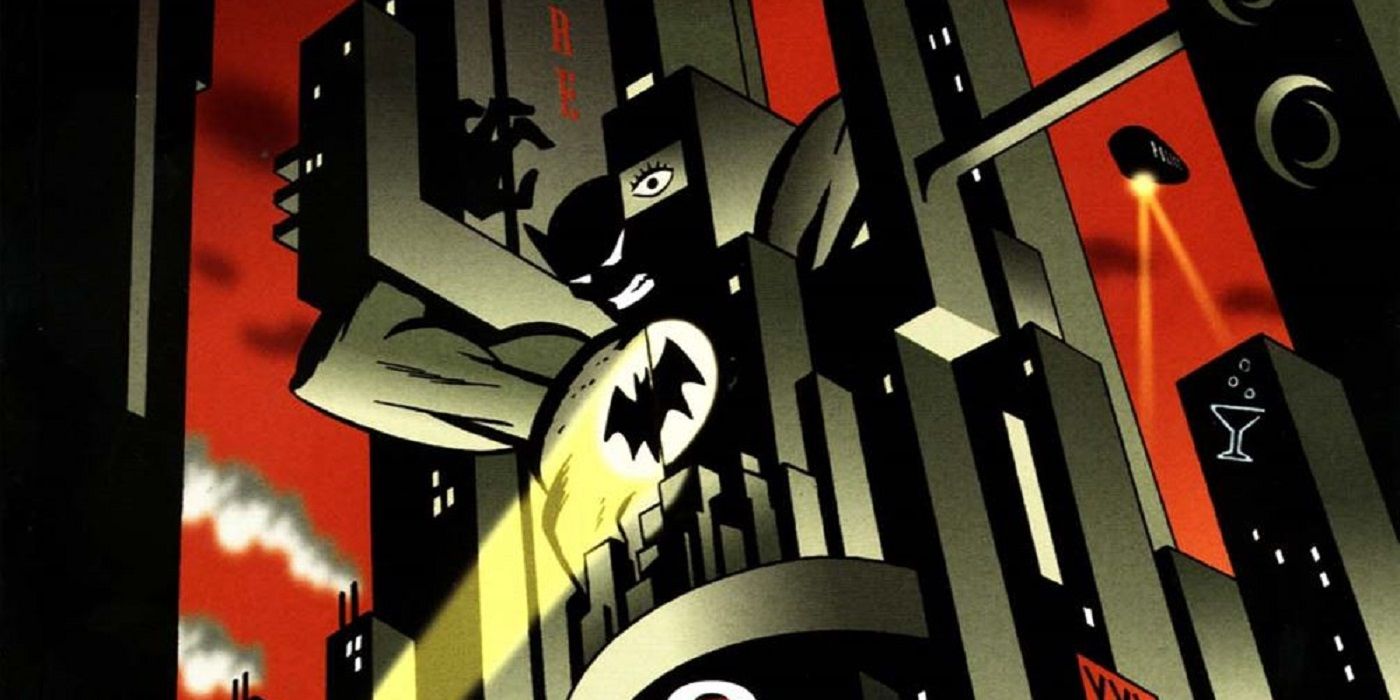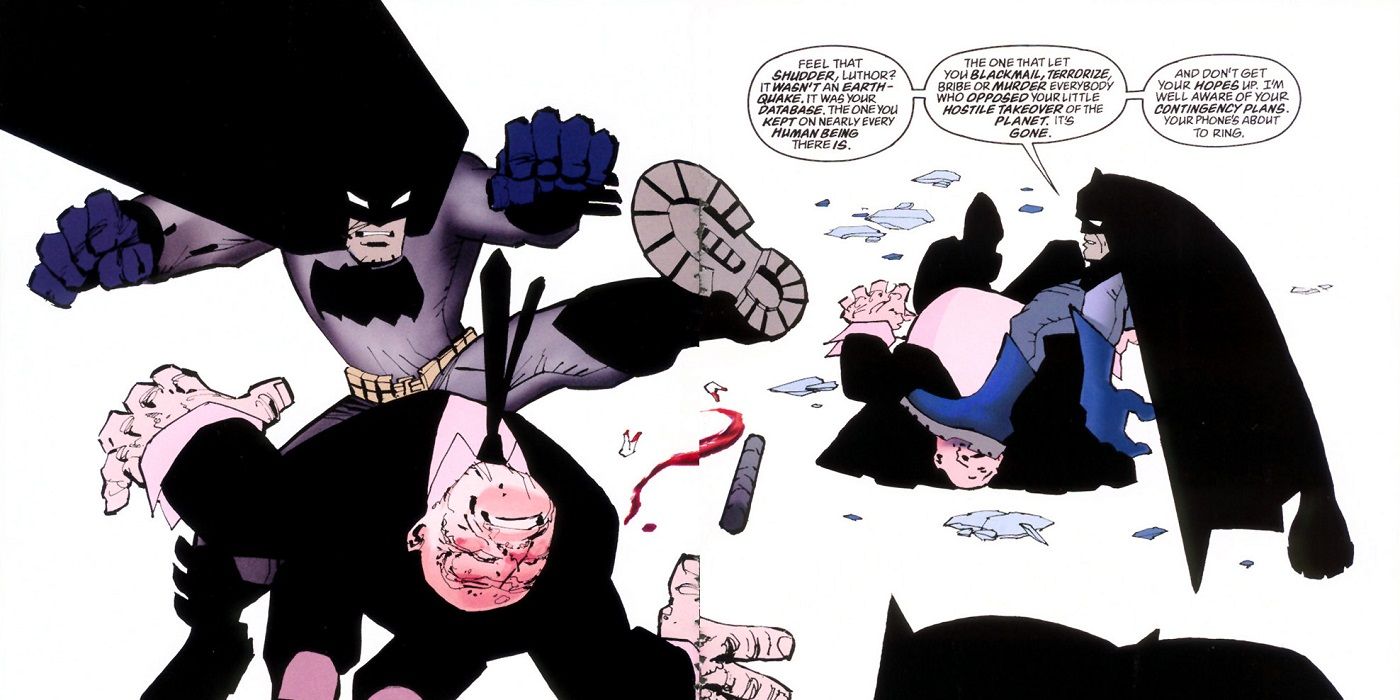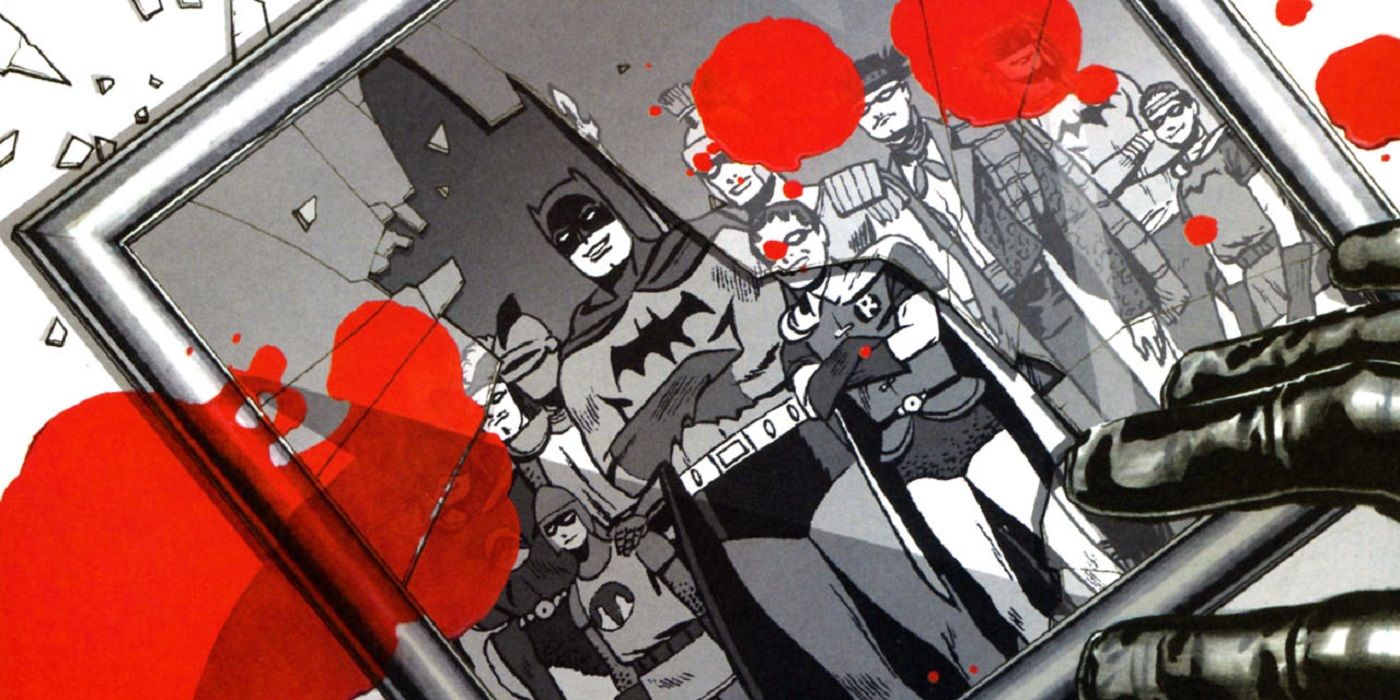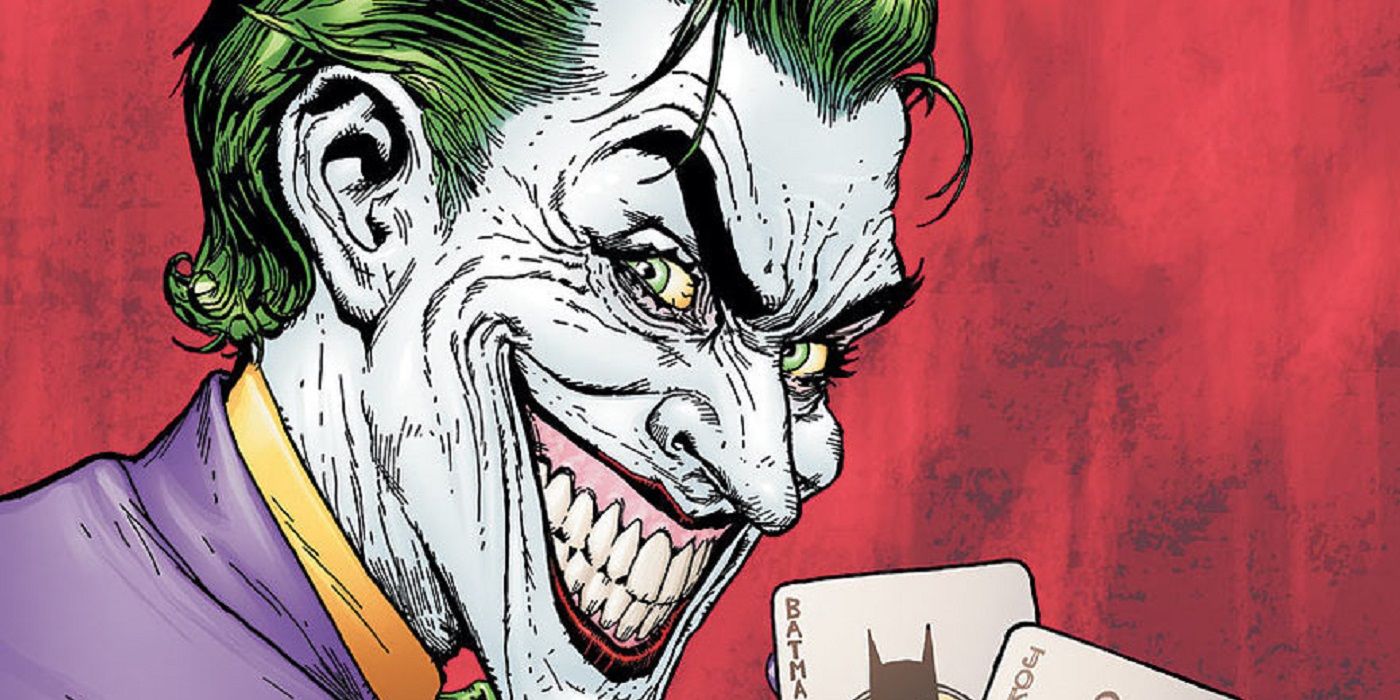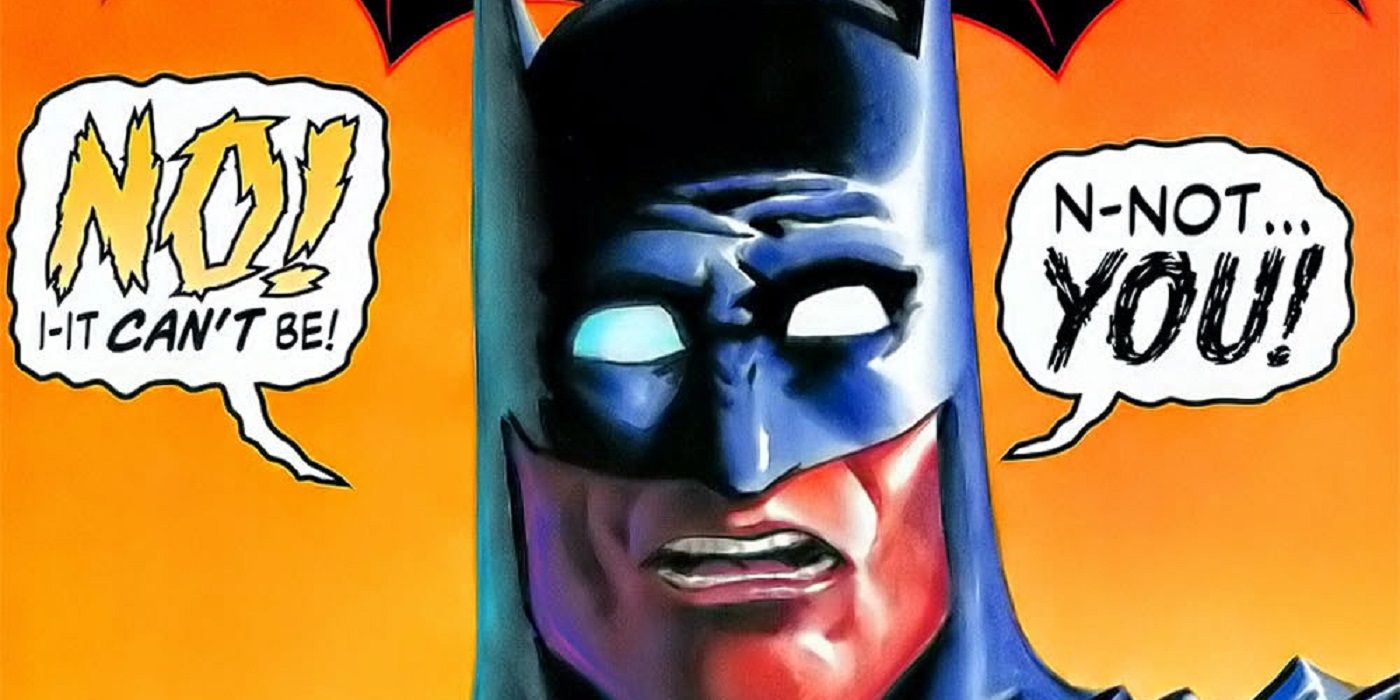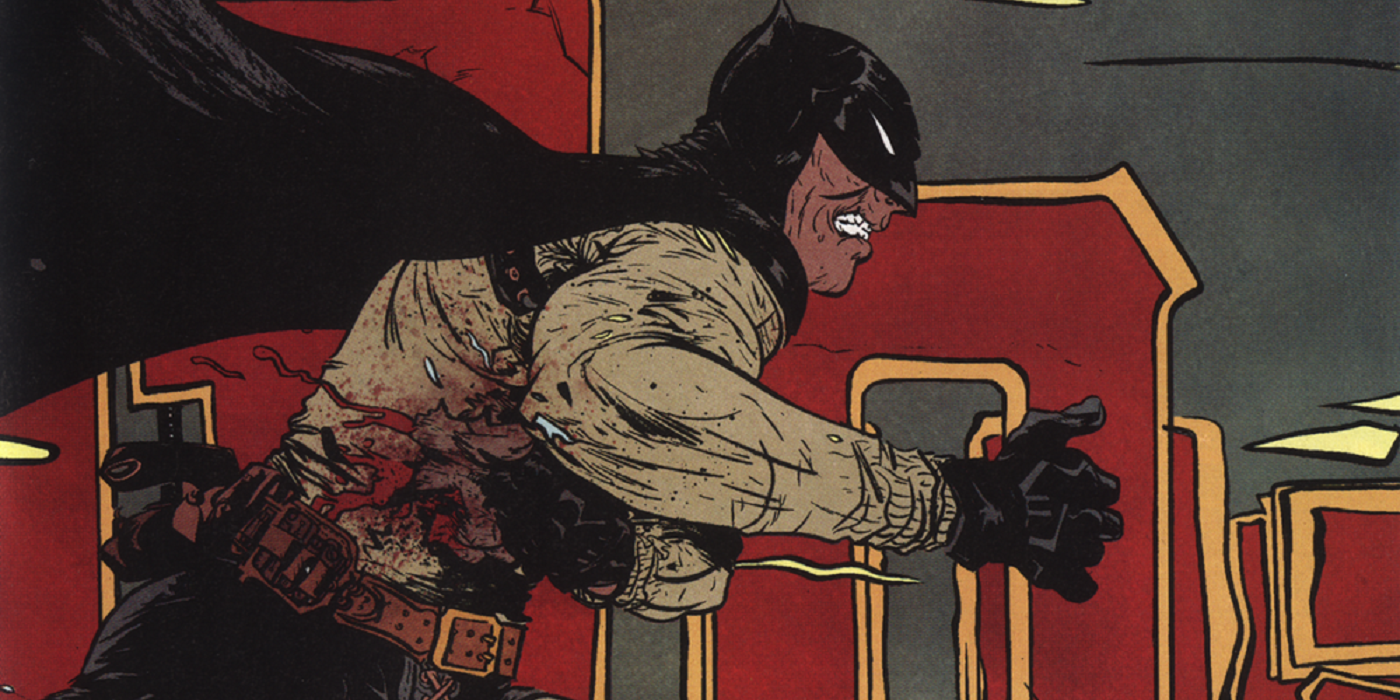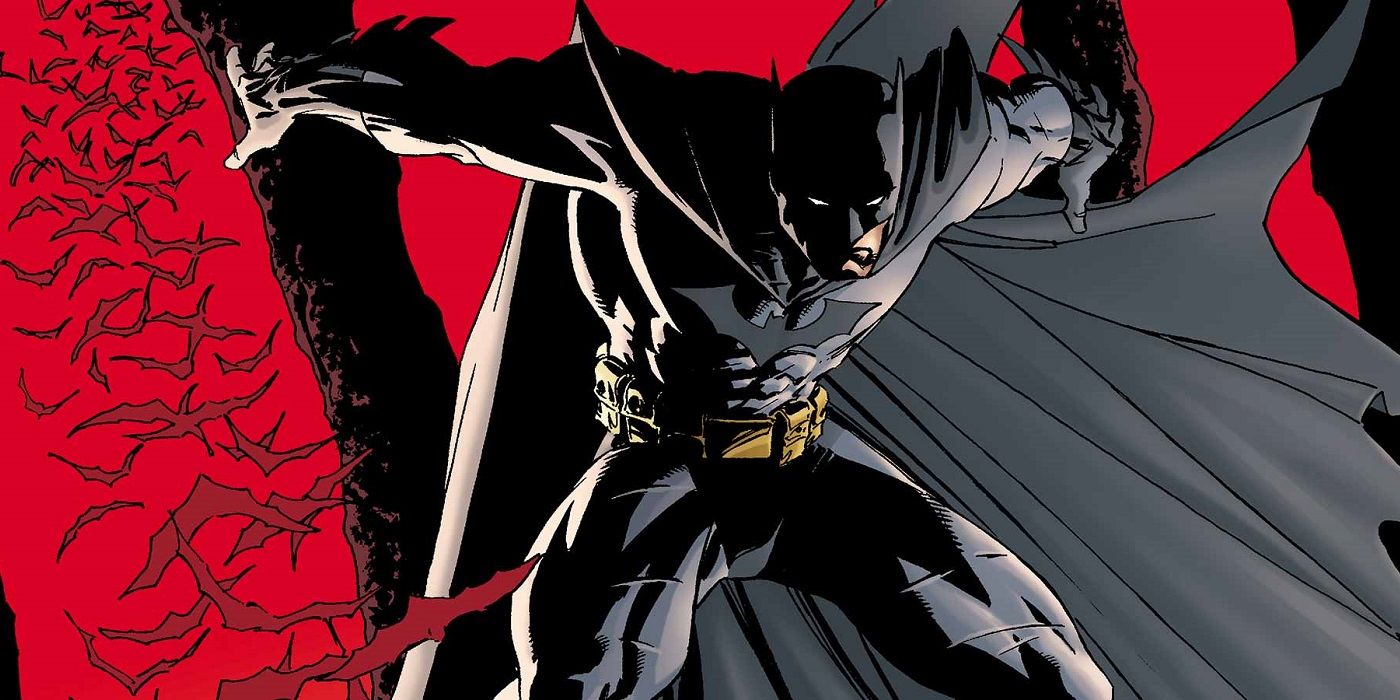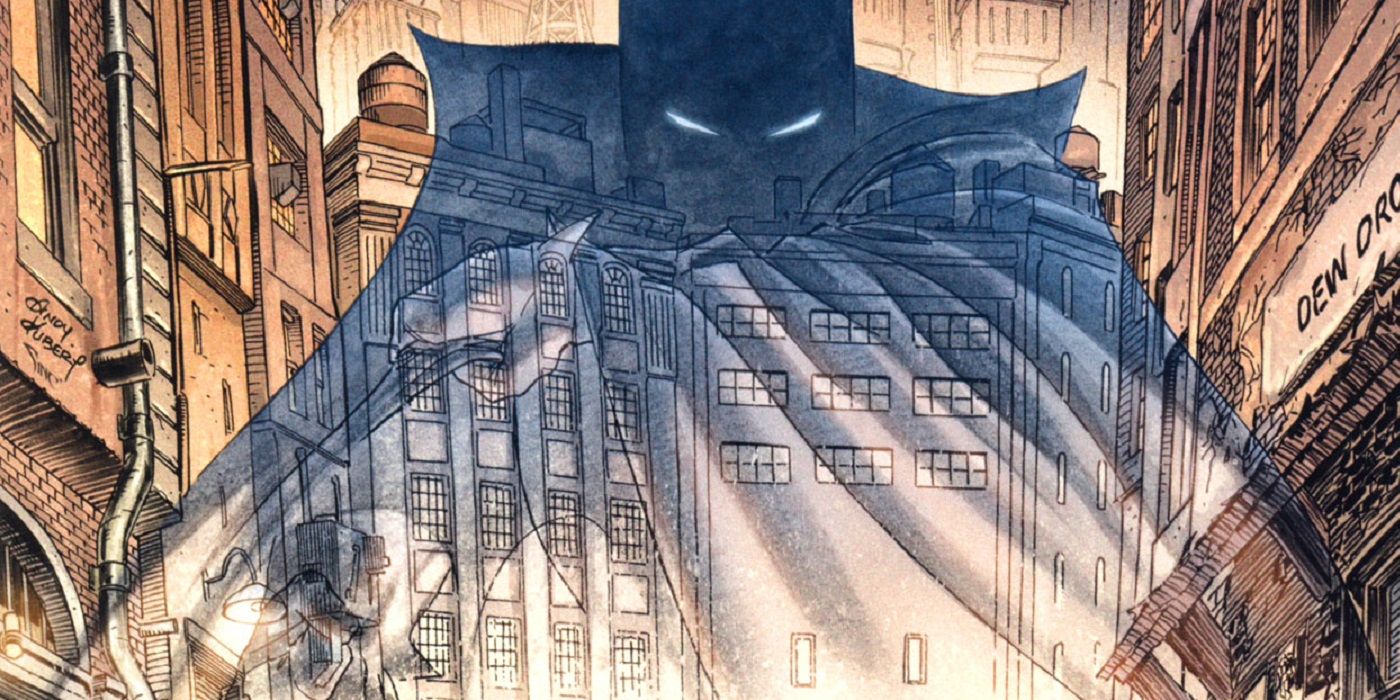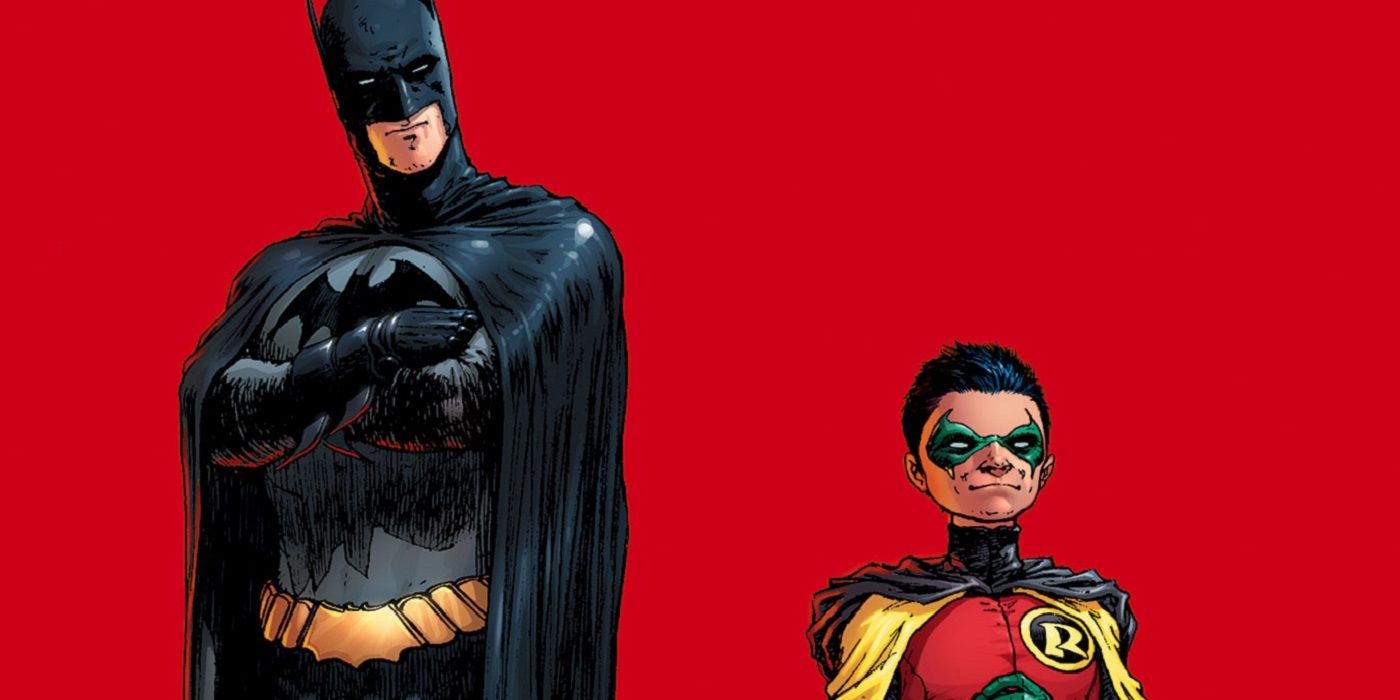We continue our series of lists featuring the greatest "Batman" stories of each decade. The fact that we need to split these lists into decades is a testament to how great of a character Batman is and how much he attracts the best and brightest comic book writers to create his adventures.
RELATED: The 15 Best Batman Stories (2010-2016)
2000 was the start of a new era in the "Batman" books, as longtime editor Denny O'Neil stepped down and Bob Shreck became the new editor of the "Batman" line of books. This led to a complete revamp of the creative teams of the main "Batman" titles, with classic creators like Greg Rucka and Ed Brubaker coming into the fold. A few years later, Jeph Loeb and Jim Lee debuted "Hush" and in 2005, Grant Morrison and Paul Dini both began runs on "Batman" and "Detective Comics," respectively. The beginning of the 21st Century was a great era for Batman. Here are the 15 best "Batman" stories from 2000-2009 (NOTE: We excluded "Gotham Central" as it is not really a "Batman" story. It was amazing, though, so if we counted it, it would be on here a bunch of times).
15 Bruce Wayne: Fugitive
In this crossover of the entire line of "Batman" comic books, Bruce Wayne is framed for the murder of his ex-girlfriend, Vesper Fairchild. The problem is that he was fighting crime as Batman at the time of the murder, so he doesn't actually have an alibi. The same goes for his bodyguard, Sasha Bordeaux, who had recently begun training with Batman as a vigilante after she learned his secret identity. The problem for Batman's friends was that the murder was committed by someone with skills very similar to Batman's.
After spending some time in prison, Bruce escaped and decides that he'll just give up the "Bruce Wayne" identity and fight crime just as Batman only, or perhaps come up with a new secret identity. His friends prove to him that he needs his "real" self and they work together to clear Bruce of murder charges (it turned out that Lex Luthor was behind it all).
14 Heart of Hush
In this storyline by Paul Dini, Dustin Nguyen and Derek Fridolfs, Batman's rival, Thomas Elliott, also known as Hush, returned with a new plan to destroy Batman's life. He was inspired to action by the rumblings he heard that the Black Glove planned to strike at Batman, so he wanted to kill him first (this was how the story nominally tied into the "R.I.P." crossover event). He first struck at Batman through Catwoman, by literally removing her heart and putting her on a life support system.
He used her heart to lure Batman into a trap, because as it turned out, Hush had underwent plastic surgery to make him Bruce Wayne's exact double. His plan was to kill Bruce Wayne off and take over, and then retire and live off of the Wayne fortune. Luckily, through the help of his allies, the fake "Bruce" was revealed. After initially escaping, a slowly recovering Catwoman used all of her skills to track him down and capture him again.
13 Public Enemies
The opening arc on "Superman/Batman" saw the Man of Steel and the Caped Crusader team-up to take down the crooked President of the United States, Lex Luthor. This caused some problems at first, as they were taking aim at the technical leader of the United States, so Luthor was able to enlist the help of some superheroes willing to follow the orders of the U.S. government to take down Batman and Superman. Meanwhile, a giant Kryptonite asteroid was headed towards Earth and Luthor tried to claim it was part of a plot by Superman against the planet.
Once the asteroid was stopped, Luthor's plans were unraveling, so he decided to just give up being the president and flat-out attack Superman and Batman directly with a battle suit that he got from Darkseid. He also injected himself with a mixture of Kryptonite and Venom (from Bane). The whole world now knew the truth, that their president was a crook. His Vice-President, Pete Ross, took over the office.
12 Broken City
The entire creative team of the hit Vertigo crime series, "100 Bullets" (right down to the letterer), put that series on hiatus so that they all could take over "Batman" for six months, telling the noir crime tale of "Broken City." Writer Brian Azzarello and artist Eduardo Risso put Batman through the wringer on this one, because while Batman was investigating the murder of a young woman, a young boy sees his parents murdered in front of him in the street.
That event naturally throws Batman off for the rest of the story, as Azarello and Risso are most interested in seeing a Batman who is not confident in his actions that has to deal with his world being thrown into turmoil by re-living his own trauma through this boy. Things take a particularly dark turn when Batman learns the truth behind the murder of the boy's parents. This was a bleak storyline.
11 Ego
In his first major work after he returned to comic books after becoming a well-regarded animation artist and director, Darwyn Cooke wrote and drew the graphic novel, "Ego," which had Batman return to the Bat Cave one night and find himself confronted by, well, his own ego. Cooke's unique approach to visual design was perfect for this book, which was essentially an extended dream sequence, as Batman is forced by his own inner thoughts to question the very purpose of what he does as the Dark Knight.
Is what he does worth it? Is he really helping people, overall? Is his presence in Gotham City actually drawing villains like the Joker to Gotham City? These are questions that really no writer can truly answer, but the most important thing is whether Bruce Wayne can find an answer that he can live with, and that's at the heart of Cooke's brilliant piece of work.
10 Dark Knight Strikes Again
At the end of Frank Miller's "Dark Knight Returns," Batman goes underground to put together an army for a future rebellion. In Miller's "Dark Knight Strikes Again," it is now almost time for that rebellion to come to a fruition, but first Batman has to expand his recruits from just disaffected youth to actual fellow superheroes. So in the beginning of the series, it is mostly Batman rescuing and then recruiting his old Justice League teammates like the Atom and the Flash, to help him in his new mission, to take down Lex Luthor and Brainiac.
Superman, meanwhile, is also going through a change in his life. After the events of "Dark Knight Returns" caused him to question whether he was a puppet or a man anymore, he rediscovers his vitality when he gets back together with Wonder Woman. Together with their daughter and a visiting Hal Jordan, they are able to take on the superhuman threat of Brainiac while Batman deals with the more down-to-Earth corruption of Lex Luthor.
9 Club of Heroes
During his run on "Batman," one of the things that writer Grant Morrison became best known for was his ability to take old "Batman" story ideas that had been deemed too silly by other writers (and readers) over the years and reinstate them into Batman's back story while also tying them into current plot lines. In "Club of Heroes," which was drawn by the brilliant J.H. Williams III, Morrison turned to an old Silver Age plot about Batman being part of the international group of heroes originally known as the "Batmen of All Nations" by having Batman meet up again with these international heroes, as we see that many of them have let their heroics fall by the wayside.
A murder occurs, though, and suddenly this reunion is now a closed door murder mystery. Williams' particularly impresses when he contrasts the "innocent" artwork of his flashbacks to his grimmer artwork for the modern day part of the story.
8 The Man Who Laughs
"The Man Who Laughs" was a prestige format one-shot where writer Ed Brubaker and artist Doug Mahnke adapted the Joker's original introduction story from the 1940s into a new version of that story. The title is a clever reference to the Victor Hugo novel that was adapted into a film in 1925, featuring Conrad Veidt as a character who seemed to be a clear visual inspiration for the Joker.
The original Joker introduction in "Batman" #1 was already a well-structured tale, but Brubaker takes it to a whole other level when he expands the list of the people that the Joker intended on killing that first night to now include Bruce Wayne! The Joker's inspired ways of killing the people might just be slick enough that he can outwit Batman himself!
The story also tackles the slow transition of Gotham City at the time to dealing with the importance of this masked vigilante, Batman.
7 Under the Hood
After teasing the return of the second Robin, Jason Todd, during the storyline, "Hush" (it was a red herring), Todd appeared for real in this storyline by Judd Winick, Doug Manhnke and Tom Nguyen (plus some fill-in artists). In it, a mysterious new Red Hood shows up in Gotham City and seems to be targeting the operations of the villainous Black Mask, but he's doing so in a particularly violent fashion.
The Red Hood also kidnapped the Joker and it is while beating on the Joker that the Red Hood reveals that he is really Jason Todd, the same former Robin whom the Joker had beaten to death years earlier (and then blew up for good measure). Batman has to deal with the fact that not only is his former sidekick alive again (courtesy of the reality-altering events of "Infinite Crisis"), but also he is acting erratically and not particularly heroic. What would Batman do if someone he trained broke bad?
6 Year 100
In the future world created by Paul Pope in this excellent mini-series, everyone is under constant surveillance. There's no longer any such thing as a secret. This suddenly changes when, for the first time in years, something unexpected happens. In this instance, it is the sudden appearance of Batman, whose entrance seems like it's out of nowhere since it was not recorded by a security camera, who shocks the establishment by appearing like a phantom.
Federal agents swarm upon Gotham City and Captain Gordon, the grandson of James Gordon, finds himself obsessed with finding Batman and discovering the truth about how he does what he does (which includes the help of a mechanic who goes by the name RobiN0). The story is an action-packed and thoughtful look at the future. There's a good reason that this series won the Eisner Award for Best Mini-Series and Best Writer/Artist for Pope.
5 Batman and Son
Grant Morrison began his run on "Batman" in dramatic style. Working with artists Andy Kubert and Jesse Delperdang, Batman first faces off against a squad of League of Assasins-trained Man-bats, created by Talia Al Ghul. This leads to the shocking discovery that Talia and Batman have a son together, as Bruce Wayne meets Damian Wayne for the first time.
Damian decides that he wants to be Batman's new partner, but to do so, he has to first eliminate Batman's current partner, so he goes out of his way to find a way to eliminate Tim Drake, the third Robin. In the end, when Talia tries to take Damian back, Damian determines that, all things considered, he'd rather be with his father. There is a particularly great moment when Damian shows up with Batman, ready to work, having created his own Robin costume, murdered an old Batman villain and badly injured Tim Drake.
4 Whatever Happened to the Caped Crusader?
After the events of "R.I.P," but before the launch of "Batman and Robin," there was a moment left to celebrate the "end" of the original "Batman" feature, so DC Comics brought in the big guns, having famed writer Neil Gaiman write this two-part story from "Batman" and "Detective Comics," which was drawn by Andy Kubert and Scott Williams.
The two issues (with a title based on the classic Alan Moore "Superman" story, "Whatever Happened to the Man of Steel") show various characters from Batman's history (all over history, as the story is outside of continuity) get together to explain why it was them who killed Batman. The whole thing is also an homage to an old David V. Reed story where Batman's rogues also explained how it was them that had killed Superman. It is also an excuse for Gaiman to write short, out-of-continuity Batman-themed stories, while also serving to see Batman, as a story idea, be reborn.
3 Batman and Robin Reborn!
Following the events of "R.I.P," Dick Grayson and Damian Wayne must take over as Batman and Robin, respectively, in a brand-new series by Grant Morrison and Frank Quitely. The clever combination of the two characters sees a carefree Batman and a brooding Robin. Frank Quitely's artwork takes center stage in the opening arc as his page layouts and designs are impeccable. In just the first issue, Quitely has two or three stunning panels, like Batman and Robin landing in Bat-cape parachutes from their now flying Batmobile.
The initial story pitted the new Dynamic Duo against Professor Pyg, a psychotic villain obsessed with mutilation. Dick and Robin must help save the young daughter of a criminal who is about to be mutilated by the evil Pyg. Damian's adjustment to crime-fighting without his father is interesting, as is Dick's beleaguered attempt at stepping into Bruce's shoes (Alfred comforting an overwhelmed Dick is another stellar panel by Quitely).
2 Hush
Superstar artist Jim Lee made his return to a monthly comic book series for the first time in years with this year-long story written by Jeph Loeb (with inks by Scott Williams). In it, Bruce Wayne reconnects with an old childhood friend, Thomas Elliot, just as a new mysterious masked villain known only as Hush begins to tear Batman's life apart.
Years earlier, Steve Englehart had done a run on "Detective Comics" with Marshall Rogers and Terry Austin that had created the template that Hush followed to perfection, only with even more gusto than Englehart. That is, it was a long arc trying to hit on all of the major "Batman" friends and foes. Loeb and Lee have Batman and Catwoman finally get together as a couple, just in time for Batman to have to take on Superman (who is being controlled by Poison Ivy). Riddler, Ra's Al Ghul, Killer Croc, Harley Quinn, and The Joker are all here for this epic adventure.
1 R.I.P.
The first act of Grant Morrison's Batman run concluded with "R.I.P," which fully set the mysterious Black Glove against our beloved hero, after a few years of slowly introducing them as a threat. The Black Glove was a secret society in Gotham that controlled crime from behind the scenes. In the opening gambit of "R.I.P", Black Glove strikes at Batman in a way that few people do, psychologically, by trying to convince Bruce that he's just gone insane. That's just what seems to happen, as Batman seems to go nuts and takes on a new persona as the Batman of Zur-En-Arrh.
However, the main theme of this story (which was drawn by Tony Daniel and Sandu Florea) is established early in the final issue of the event, "But that's the thing about Batman. Batman thinks about everything." This story temporarily takes Bruce Wayne out of the pages of "Batman," but it sets up the next epic act of Morrison's three-act story very well.
What was your favorite Batman story from this decade? Let us know in the comments section!

